In Traditional Chinese Medicine, certain acupoints are connected with different regions of the brain and limbic system. Acupuncture for brain health focuses on activating these points to induce changes in the brain, modulating pain pathways, increasing cerebral blood flow and oxygenation, and perhaps even increasing angiogenesis—the creation of new blood vessels.
Acupuncture creates a more relaxed state by improving the ratios of certain neurotransmitters, contributing to better sleep and providing a recuperative effect. Animal studies suggest that acupuncture for brain health improves cognitive function and memory and may even aid recovery from brain injury.
Can Acupuncture Alter Your Brain Functions?
In recent years, magnetic resonance imaging data has revealed the significant modulatory activities of acupuncture in widespread cerebrocerebellar brain regions. A systematic review investigating the neurobiological foundations of acupuncture found abundant evidence that acupuncture stimulation facilitates the release of neuropeptides in the central nervous system, producing profound physiological effects. Neuroimaging data strongly suggest that acupuncture is able to modulate areas of the cerebellum and limbic system, altering the cognitive dimensions of pain processing and providing a therapeutic effect.
Pioneering work has shown that acupuncture can enhance functional connectivity between different regions of the brain. In all the animal studies the researchers looked at in this systematic review, acupuncture was shown to have a significant beneficial effect on cognitive function. Despite this strong evidence, the researchers were careful to note that more high-quality research is still required to assess the effectiveness of acupuncture for brain health in treating cognitive impairment in humans.
Can acupuncture Help With Neurological Issues?

In a 2017 clinical trial, 32 patients with amnestic mild cognitive impairment were divided into two groups, where they received either acupuncture at the Tiaoshen Yizhi acupoints (including Si Shen Cong, Tai Xi, and Tai Chong) or sham acupuncture at non-relevant acupoints. After receiving acupuncture treatments for four consecutive weeks, five times per week, functional magnetic resonance imaging showed that connections between the prefrontal cortex, hippocampus, and thalamus increased in the Tiaoshen Yizhi group. Patients in the Tiaoshen Yizhi group also exhibited improved cognitive performance.
What Are The Acupuncture Points For Brain Health?
Acupoint: Liv-3 (Other Names: Liver-3/Tai Chong/Supreme Rush)

Located on the liver meridian, the Tai Chong acupoint plays an important role in moving blood and energy through the body, alleviating cramps, depression, and headaches.
A clinical study indicated that acupuncture at the Liv-3 acupoint promotes blood flow and brain activation in areas related to vision, emotion, and cognition, which is why the Tai Chong is one of the important acupressure points for brain fog.
Liv-3 is located on the dorsum of the foot, between the big toe and the second toe, at the angle between the first and second metatarsal bones.
Acupoint: LI-4 (Other Names: Large Intestine-4/He Gu/Joining Valley)

Activating this point on the large intestine meridian increases blood flow throughout the body. The He Gu, as it’s known in Chinese, is one of the major acupressure points for blood circulation in the brain. Stimulation here increases the flow of oxygen to the brain, improving cognitive function and overall brain health.
The LI-4 acupoint is located on the back of the hand, between the first and second metacarpal bones. Apply firm pressure to this point on each hand.
Acupoint: KI-3 (Other Names: Kidney-3/Tai Xi/Supreme Stream)
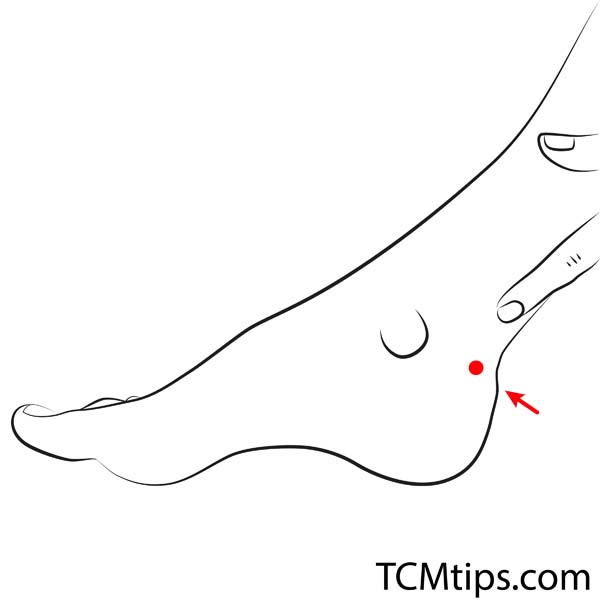
The third of our essential acupuncture points for brain health is the Tai Xi or “Supreme Stream.” KI-3 is a versatile acupoint with a wide range of indications and applications, including blood pressure management, diabetes, and menstrual cramps. Stimulation here also alleviates neurological conditions such as deafness and tinnitus, headaches and dizziness, and blurred vision.
A systematic review summarizing the information on the effectiveness of acupuncture treatment on neurogenesis, synaptic plasticity, regulatory factors, and signaling pathways identified KI-3 as an important acupoint for alleviating neuroinflammation, which is why the Tai Xi is employed in acupressure for brain inflammation.
KI-3 is located on the medial part of the foot, in the depression between the tip of the medial malleolus and the tendon calcaneus.
Acupoint: TE-5 (Other Names: Triple Energizer-5/Wai Guan/Outer Pass)
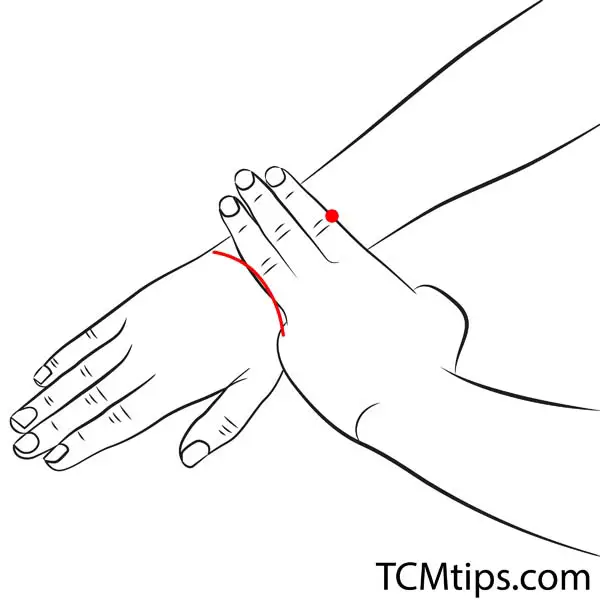

Another one of the important acupressure points for the brain is located on the dorsal aspect of the forearm, around two cun above the wrist crease, at the midpoint between the ulna and the radius. Long considered one of the key acupressure points for brain stimulation, the TE-5 acupoint has been the subject of some important recent studies.
A resting-state functional magnetic resonance imaging study demonstrated that acupuncture in patients with ischemic stroke influenced the activation of functional brain areas. The results indicated that altered specificity caused in the right parietal lobe might possibly be associated with a central mechanism of acupuncture at the Wai Guan acupoint for stroke patients.
A review of the functional magnetic resonance imaging data related to TE-5 revealed different patterns of brain activation between stimulation of the Wai Guan and non-acupoints. Cerebellar activation was generally seen only during true Wai Guan acupuncture. The researchers concluded that cerebellar activation at TE-5 implies that this point has an influence on healing networks in the brain.
Acupoint: Bl-13 (Other Names: Urinary Bladder-13/Fei Shu/Lung Transporter)

Acupuncture at Bl-13 appears to have an effect on improving the symptoms of hemiparesis and dysarthria—a form of brain damage that causes the inability to control the muscles used in speech, making it among the most effective acupuncture points for brain health.
The Fei Shu, as it’s called in Chinese, has also been indicated in acupuncture for brain tumor treatment. In a promising case study, a man diagnosed with recurrent oligodendroglioma and given only three to six months to live improved significantly after a combination of pharmacopuncture and acupuncture. The man’s seizures entirely disappeared, and magnetic resonance imaging data revealed that his tumor was significantly decreased.
Bl-13 is located on the back, around two finger widths to either side of the third thoracic vertebra.
Acupoint: GV-20 (Other Names: The Governing Vessel-20/Bai Hui/Hundred Convergence)
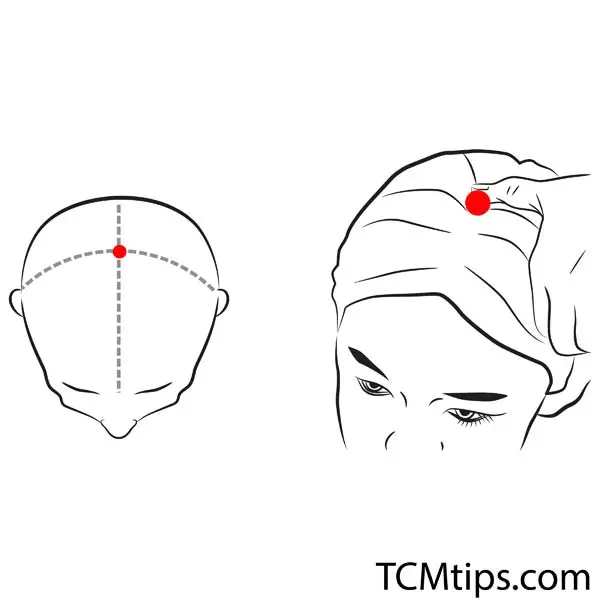
Based on Traditional Chinese Medicine theory, GV-20 is located at the point where the Yang meridians meet, at the highest place on the head. The Bai Hui acupoint has been used since ancient times to treat neurological issues, including stroke.
Modern studies have proven GV-20 to be among the very best acupressure points for brain injury. A systematic review and meta-analysis found GV-20-based scalp acupuncture effective in removing limb paralyze caused by a cerebral infarct in rats. Electroacupuncture at GV-20 was able to attenuate brain edema and blood-brain barrier disruption caused by cerebral ischemia. Furthermore, pre-treatment with electroacupuncture at GV-20 strongly protected the brain against transient cerebral ischemic injury.
Acupoint: GB-20 (Other Names: Gallbladder-20/Feng Chi/Wind Pool)
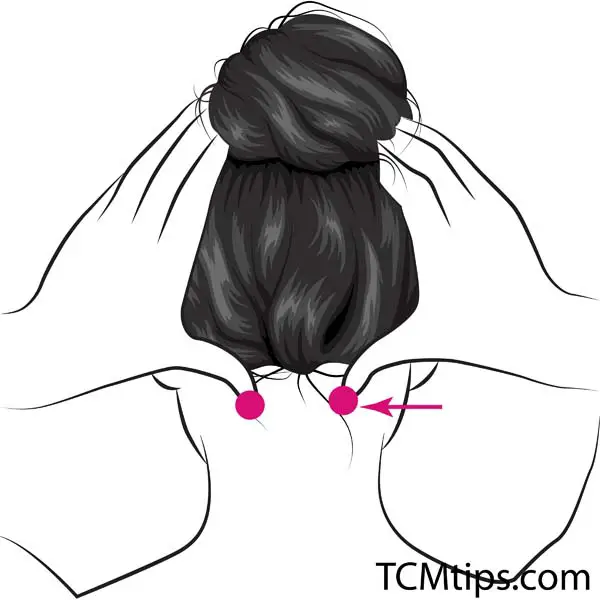
Another great acupuncture point for brain health, GB-20 is well known for its ability to improve mental clarity and function. Stimulation of the Feng Chi or “Wind Pool” increases blood flow to the brain, carrying oxygen and nutrients, making it one of the useful acupuncture points for concussion.
GB-20 is located on the base of the neck. To find it, trace a finger down the back of your head until you feel the point where the skull ends and the neck begins—it commonly falls between the ears. Apply firm pressure for five to ten seconds while breathing slowly.
Acupoint: ST-36 (Other Names: Stomach-36/Zu San Li/Leg Three Miles)

One of the best acupressure points for brain health is actually located on the lower leg. Stimulation of ST-36 fortifies the body and the blood, strengthens the spleen and the stomach, and provides relief from pain.
In a clinical study, acupuncture at ST-36 and GV-20 improves the recovery of rats subjected to cerebral ischemia and reperfusion injury, suggesting a possible use in acupuncture for brain aneurysms.
You can find this stomach meridian point on the anterior aspect of the lower leg, one finger-width from the anterior crest of the tibia.
Acupoint: Bl-10 (Other Names: Urinary Bladder-10/Tian Zhu/Celestial Pillar)
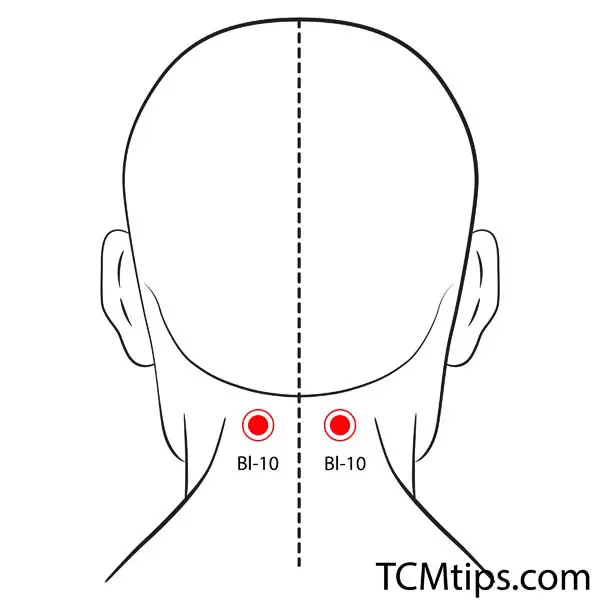
You can use this acupressure point for brain health to relieve negative emotion and stress, alleviate headaches, and promote clarity of mind. Massaging this point on the back of the neck helps to widen the blood vessels around the sympathetic nerve, increasing blood flow to the brain and reducing the risk of cerebrovascular disease.
Tian Zhu has shown promise in acupressure for dementia, particularly for Alzheimer’s disease. In an analysis based on 15 randomized controlled trials, researchers concluded that Bl-10, used in combination with SP-6 and HT-7, should be acknowledged as a core combination for future acupuncture treatments of Alzheimer’s disease.
Acupoint: EM-1 (Other Names: Si Shen Cong)

The last of our acupuncture points for brain health is actually a group of points clustered around GV-20 on the top of the head. These points work together to bring blood flow to the head and enhance cognitive function.
In a randomized controlled trial, researchers found that acupressure and cognitive training could enhance cognitive function in older adults with mild cognitive impairment. The researchers used the Si Shen Cong acupressure points for memory and cognitive improvement, as well as GV-20 and GB-20, other key acupressure points for brain health.
Conclusion
- Liv-3 promotes blood flow and activation in the regions related to vision and cognition.
- Liv-4 increases the flow of oxygen to the brain, improving cognitive function and overall brain health.
- KI-3 alleviates tinnitus, headaches, and dizziness and may have an effect on reducing neuroinflammation
- Cerebellar activation at TE-5 during acupuncture suggests that this point has an influence on healing networks in the brain.
- Bl-13 appears to improve symptoms of hemiparesis and dysarthria and is also indicated in acupuncture for a brain tumor.
- GV-20 has been used to treat strokes since ancient times and may also protect against transient cerebral ischemic injury.
- GB-20 increases blood flow to the brain and improves mental clarity and function.
- ST-36 may aid recovery from cerebral ischemia and reperfusion injury.
- EM-1 has shown promise in improving memory and cognitive function.

Try our Anti-Aging Gua Sha Tool designed to bring out your skin’s natural glow.
Best Gua Sha Product- Anti-Aging: The tool is designed to target 11 specific aging signs such as wrinkles and sagging skin. By following the 7-step routine, users can improve skin firmness and reduce fine lines naturally.
- Enhances Skincare Routine: It works effectively with serums and lotions, boosting absorption and efficacy of skincare products.
- Visible Skin Improvement: Users can expect a smoother complexion, reduced puffiness, and a more youthful appearance.
 P. Sze
P. Sze 

















